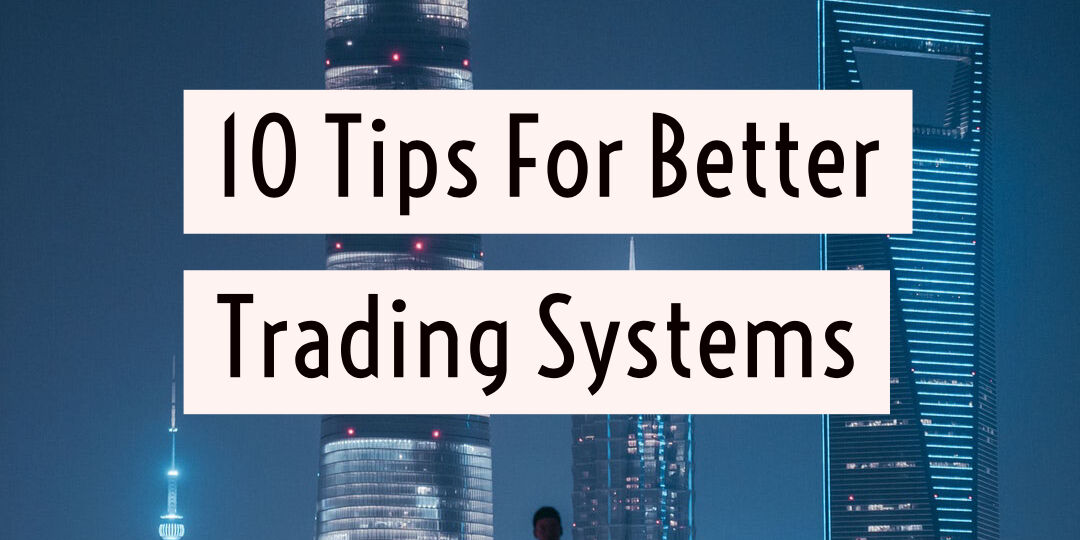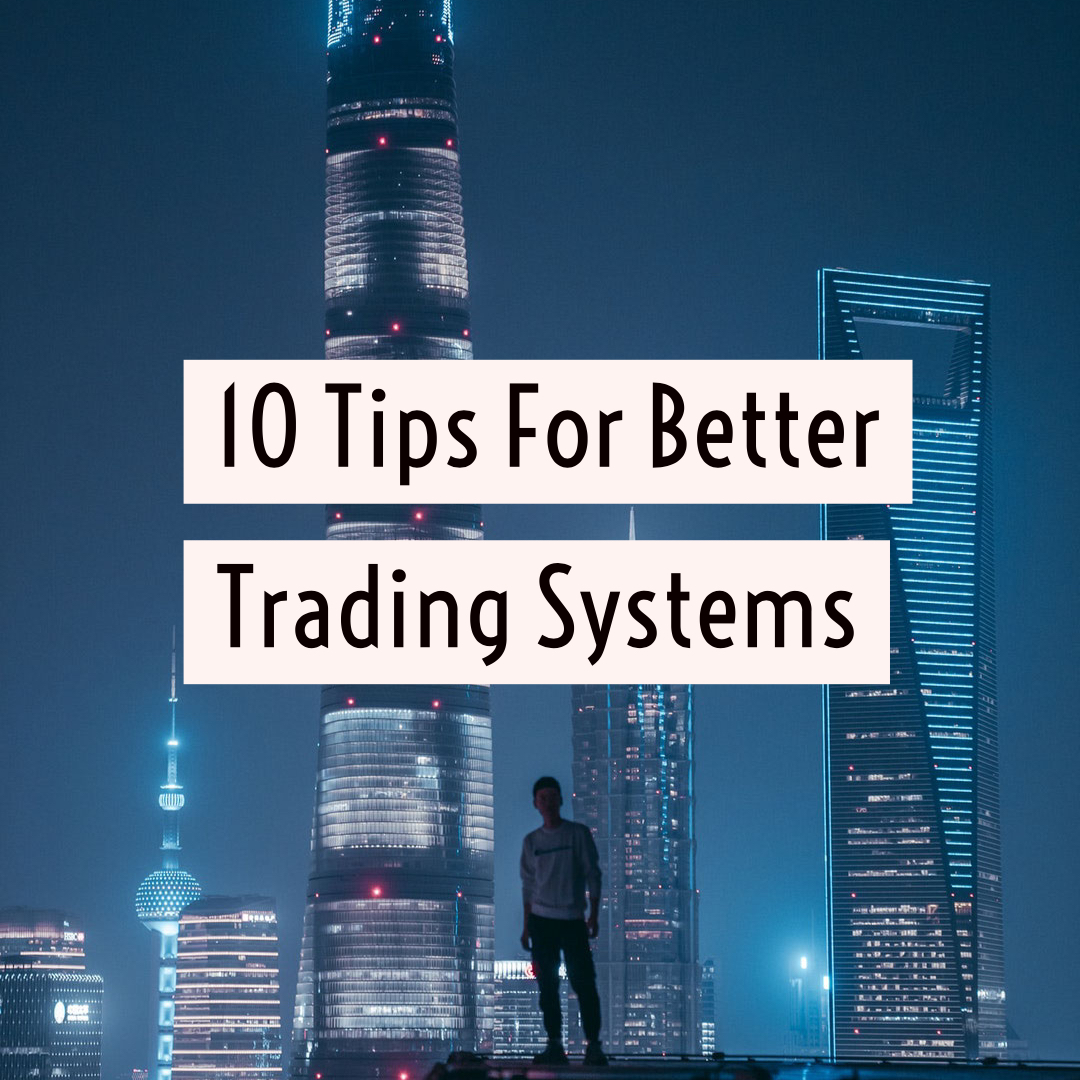
In this post I will be sharing 10 tips that can help you to build better trading strategies and become a better systematic trader.
These tips contain little things that are often overlooked or ignored. They’ve helped me and many of the traders I’ve worked with.
1. Get The Basics Right
The first thing to get right are the basics.
This includes choosing the right platform, getting good quality data, avoiding mistakes like curve fitting and future leaks, and using large enough sample sizes for your system.
We cover these principles in our research program and have written about them in many articles like this one on mean reversion.
Once you have the basics sorted there are all sorts of other areas for improvement. This post is to do with more subtle tricks that are not often covered so let’s look at some more.
2. Keep Yourself Organised
One of the best things you can do to build better trading systems is to become more organised with your workflow. This means tidying your workstation and cleaning up your files and folders.
The more organised you are, the quicker you can access things you need and the more efficient you can become with your backtesting.
If you’re like me, you probably have hundreds of files containing different codes and trading strategies.
It’s a good idea to stick to a file naming convention that makes sense and make a record of any ideas that have potential.
For example, give your formulas a date and a version; v1.0, v1.1, v1A etc.
Actually, one of the reasons I started Marwood Research was so I could keep a better record of all the trading strategies in my collection.
3. Have A Routine
It’s also useful to have a routine that works for you.
My daily routine consists of updating my Amibroker database, scanning for new trading signals and then sending those orders to Interactive Brokers before the market open.
The whole process takes about 30 minutes and I can then get on with the rest of my day.
I also have a time limit for any analysis or backtesting I do.
If I spend more than an hour on a trading idea and I’m getting nowhere I will put it down and move on to something else.
This is essential because it stops you getting stuck in the backtesting spiral.
When I don’t follow this routine I find that things can become rushed and messy. This leads to a lot of wasted time on mediocre strategies and often mistakes.
4. Don’t Ignore The Equity Curve
Michael Harris wrote a good article once criticising research that withholds the historical equity curve of a particular strategy.
This is quite common in academic papers where a plethora of statistics are shown but no equity curve.
The problem is that profits from a trading strategy might cluster at the beginning, in the middle or at the end.
If you don’t have an equity curve you can’t see how the strategy has performed over time. So always remember to pay careful attention to the way the equity curve grows.
If you come across research without an equity curve, be extra careful because there could be a reason the author has left it out.
A strategy that makes all its profits at the beginning of a test period is no use to anyone. It doesn’t matter what the Sharpe ratio is.
5. Track What Is Useful
Most people are aware of the importance of tracking particular metrics.
As the saying goes ‘you can’t improve what you don’t measure’.
The trouble is measuring can be time consuming and monotonous work. But tracking can be one of the most important tasks for any trader so stay disciplined and try to automate as much as possible.
For example, in a recent article I showed how you can scrape stock data from sites like Finviz and Google Finance. You can use this technique to easily keep track of lots of quotes and stats.
However, studies have also shown that more information doesn’t necessarily lead to better results.
For example, in 1974 Paul Slovic found that horse racing handicappers did no better when presented with more information that should have helped them better calculate odds.
So after you set up a process for collecting data make sure you only focus on the data that is actually useful to you.
6. Be Wary Of Hype Like Machine Learning
A book I have been enjoying recently is The Outsiders by William Thorndike. This book details the stories of eight of the best CEOs of modern times. Figures such as John Malone, Henry Singleton and Warren Buffett.
What I found interesting is the way some of these CEOs dealt with technological changes in their industries. Rather than latching on to new technologies, these CEOs often delayed adoption until they were absolutely sure that the new techniques would be a success.
They waited for other entrepreneurs to test out the waters first. Only once these CEOs were sure that a technology was profitable and low risk would they enter themselves.
I think there are lessons here for quant traders and the hype surrounding things like artificial intelligence and machine learning.
Of course new technologies can help increase trading profits. But they also come with a large investment of time and money. Traders need to weigh up these costs and only pursue new methods if it makes economic sense to do so.
7. Pay Attention To Leverage
A number of the strategies that are published on Marwood Research are bare bones strategies that do not use any type of leverage or margin.
The benefits from this are that you can judge a system on its signal alone and not on the money management system that is applied.
However, it’s a good idea to consider leverage because it can be an efficient way to increase returns.
For example, let’s say you have a system that has a win rate of 40% and a win:loss ratio of 2:1.
A quick calculation with Kelly suggests that the appropriate bet size is 10%.
This size could be achieved using broker margin or by trading CFDs with an appropriate stop loss in place.
Always build your trading signal first and add your money management to it at the final stage, taking into account your own tolerance for risk.
8. Have A Margin Of Safety
Margin of safety is not just for value investors and can be a useful concept for system traders too.
Let me explain…
A crucial component of building a trading system is to produce accurate simulations.
For this, you should know what your costs are and be able to show them in your workings.
To do this effectively, don’t just rely on what you read on your brokers website or in a trading article. Check your statements and find out exactly what it is costing you to trade.
Remember though that costs and slippage change with volatility and slippage increases in illiquid markets.
An important tip is to give yourself some margin of safety in your calculations.
For example, if it typically costs you $5 to trade a stock, set your costs to $10 a trade.
Your backtest results will suffer but you will end up with systems that are more robust and less likely to fail in live markets.
Another way to have a margin of safety is to cross check your historical data with other sources.
One of the pioneers of quant trading, Winton Capital, purchases data from as many as 10 different providers and cross checks that data to make sure they are getting accurate quotes.
9. Avoid Complexity
This tip is really one of the basics but it’s worth repeating here because it’s probably the number one reason why new system traders trip up.
Often, a new trader will keep adding rules to their trading system until they become seduced by the results. At this point, it becomes hard for the newbie developer to let go of their ‘baby’ because the equity curve is just too good.
As you can imagine, a system with too many rules will fit to random noise more easily and is therefore more likely to fail when taken live.
Financial markets are inherently complex but the more rules a system has, the harder it is to prove that it isn’t random. That’s why complexity is a double edge sword and should be avoided.
If a trader sends me a system with four or five rules and a sample of say, 150 trades, I won’t even look at it. I will immediately bin it because it will be too hard for me to prove it’s not random.
Some of the systems in our program are shown with samples of over 3,000 trades and these are very often the best performing systems when we take them live.
10. Get Help Where Needed
One of the curious things I’ve found over the years is that traders are notoriously cost conscious.
They rarely spend money on professional support and services because they’d rather save that cash for their trading account.
This attitude has advantages but it can also backfire.
A clear example is historical data where high quality is absolutely essential. I personally wasted a couple of years using poor quality data and paid the price.
But this also applies to trading platforms, education and professional support.
If you are not the best coder, for example, it can be well worth hiring someone to help you code your strategy since it will save you time and money in the long run.
All businesses have costs that they need to take care of in order to function and financial trading is no different.

